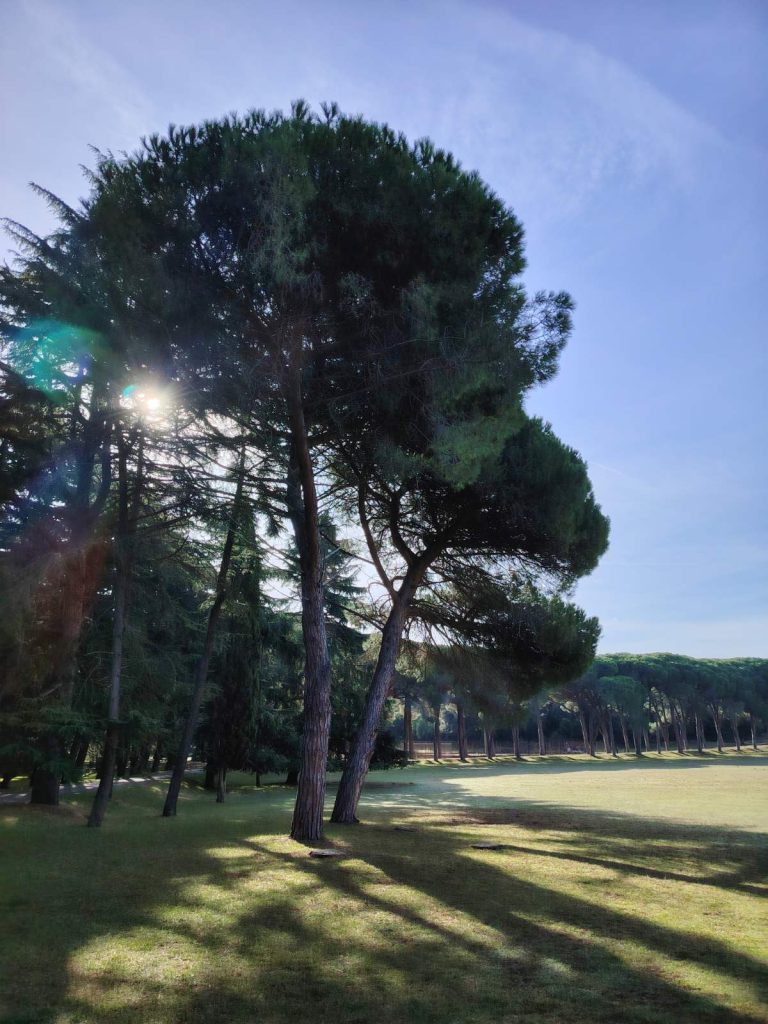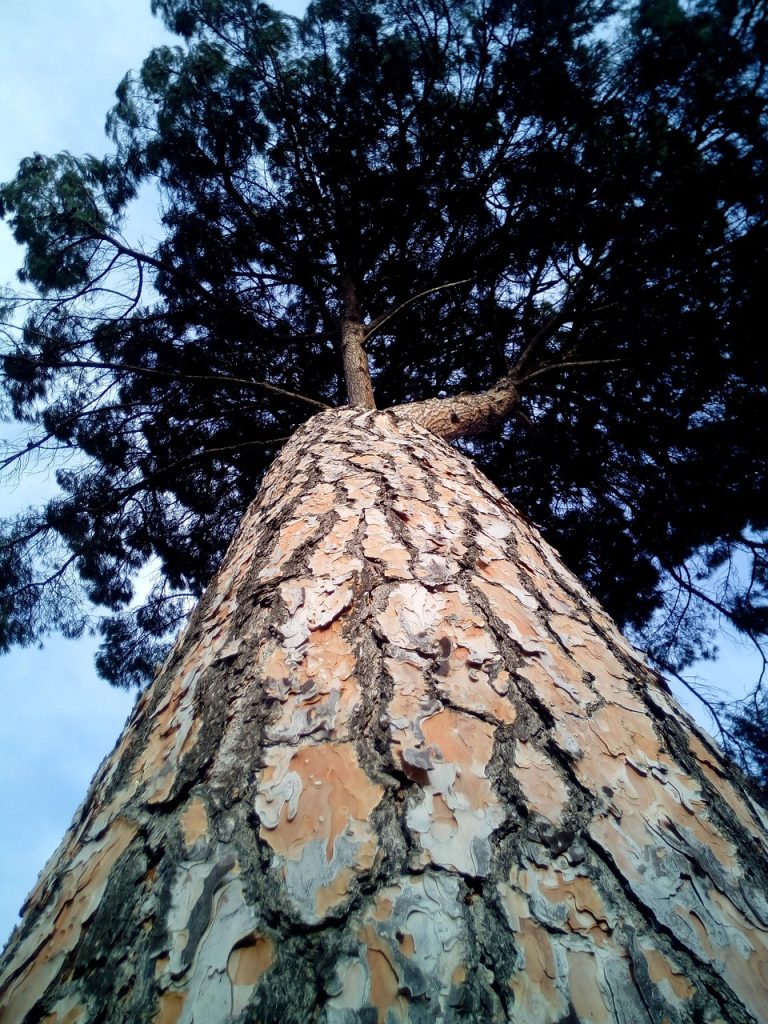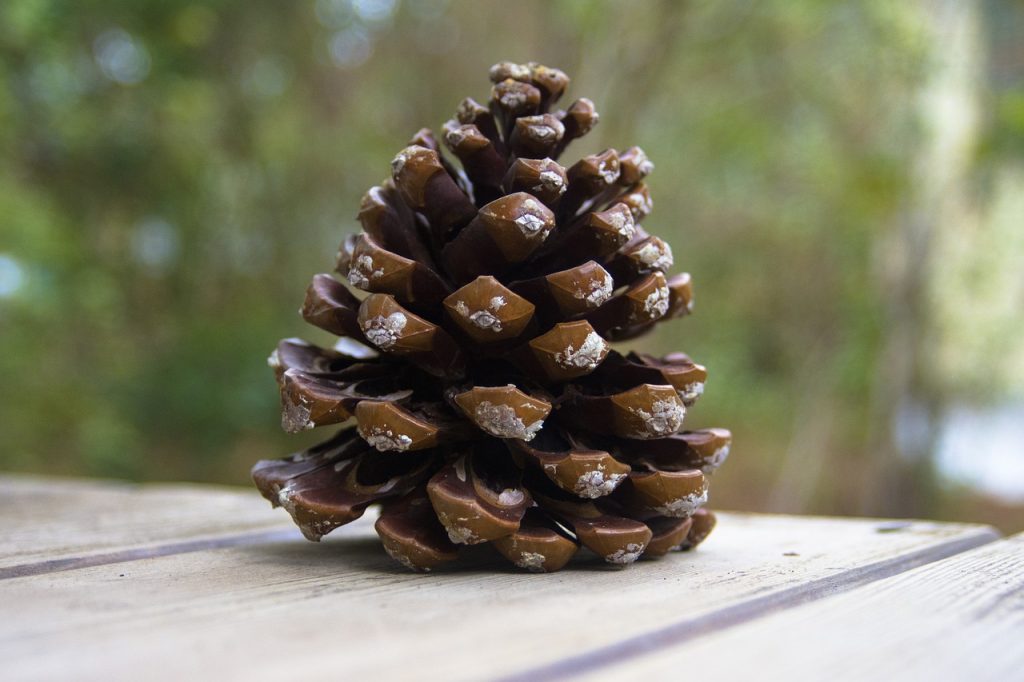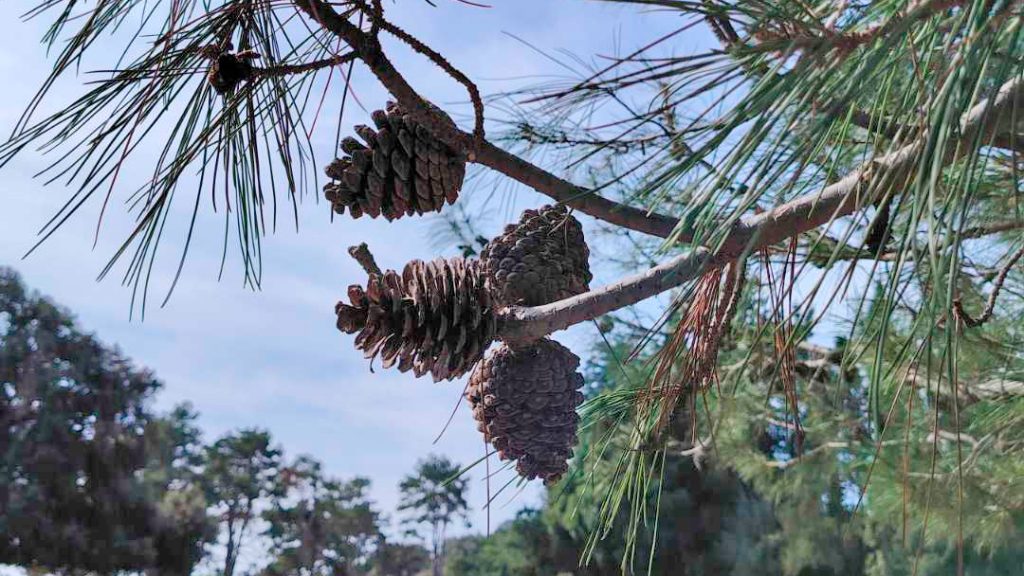Stone Pine (Pinus pinea)
The Stone Pine (Pinus pinea), also known as the Italian Stone Pine or Umbrella Pine, is a large evergreen tree native to the Mediterranean region. It is well-known for its broad, umbrella-like canopy and produces the edible pine nuts often used in cooking. The tree typically grows to a height of 40 to 80 feet (12 to 24 meters) and features a straight, sturdy trunk that can reach a diameter of 2 to 3 feet (0.6 to 1 meter). The bark is thick, reddish-brown, and deeply fissured, giving the tree a rugged appearance.
The needles of the Stone Pine are dark green, long, and slender, measuring about 3 to 8 inches (7.5 to 20 cm) in length. They are grouped in pairs and provide the tree with a dense, needle-like foliage. The tree produces large, rounded cones that are 3 to 6 inches (7.5 to 15 cm) long, which mature to a glossy brown color. Inside these cones are the prized pine nuts, edible seeds which people have been harvesting for centuries.

Stone Pines thrive in well-drained, sandy, or rocky soils and are highly tolerant of drought. They prefer full sun of the coastal areas, open woodlands, and rocky hillsides. The tree is well-suited to the Mediterranean climate, with its hot, dry summers and mild, wet winters. It is also resistant to salt spray, making it an ideal choice for coastal planting.
In addition to its ornamental value, the Stone Pine plays a significant role in the Mediterranean ecosystem. It provides habitat and food for various wildlife species, including birds and small mammals. It’s nuts are a valuable food source. Stone Pines are also widely planted in parks and gardens for their aesthetic appeal and shade.

Scientific Classification of Stone Pine
| Kingdom | Plantae |
| Clade | Tracheophytes |
| Clade | Gymnosperms |
| Order | Pinales |
| Family | Pinaceae |
| Genus | Pinus |
| Scientific Name | Pinus pinea |

Quick Information
| Plant Type | Evergreen coniferous tree |
| Identification | Height: Typically 40 to 80 feet (12 to 24 meters) tall Leaves: Long, slender needles, 3-8 inches (7.5-20 cm) long, grouped in pairs Stem: Thick, reddish-brown bark, deeply fissured Flowers: Monoecious; male and female cones on the same tree Roots: Deep, wide-spreading root system Growth Habit: Broad, umbrella-like canopy Crown: Rounded, dense, and wide |
| Distribution | Native to the Mediterranean region, particularly in coastal areas |
| Habitat | Grows in well-drained, sandy, or rocky soils, often found in coastal areas, open woodlands, and rocky hillsides |
| USDA Hardiness Zone | 8 through 10 |
| Growth Rate | Moderate; typically grows about 12-24 inches (30-60 cm) per year |
| Lifespan | Long-lived; can live for several hundred years |
| Growing Conditions | Sunlight: Full sun Soil: Well-drained, prefers sandy or rocky soils Water: Highly drought-tolerant, minimal watering needed |
| Drought Tolerance | High; well-suited to dry Mediterranean climates |
| Diseases | Susceptible to pine wilt, root rot, and needle blight |
| Pests | Common pests include pine processionary caterpillars and bark beetles |
| Reproductive System | Monoecious; produces both male and female cones |
| Propagation | Through seeds |
| Wildlife Value | Provides food (seeds) and habitat for various wildlife species, including birds and small mammals |
| Uses | Edible pine nuts, timber for construction, ornamental planting, erosion control |
| IUCN Conservation Status | Not currently listed as threatened; widely cultivated and managed |


